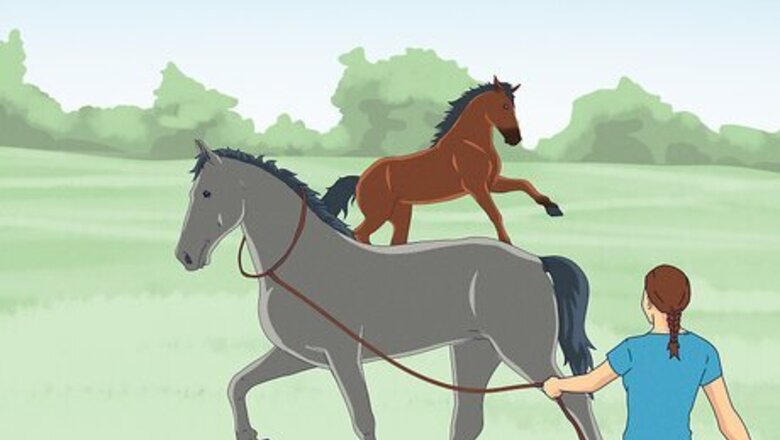
views
X
Research source
Do not interfere with any wild horses.
Catching a Scared or Reluctant Horse
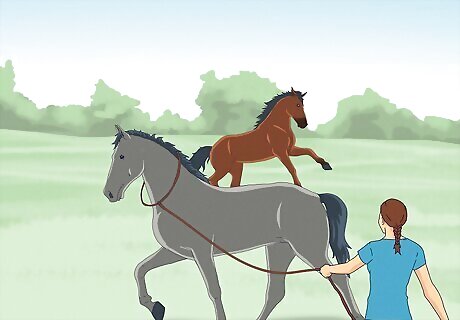
Catch the other horses in the field first. Some horses dislike being left alone. Or, your horse might have a special friend; if the friend is caught, she will let herself be caught, too.
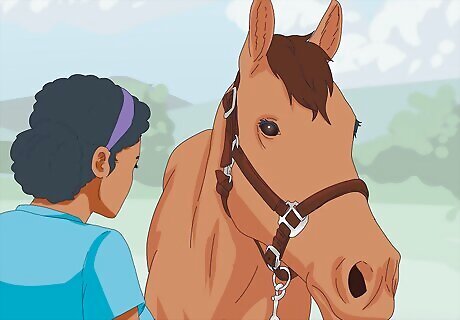
Carry the halter shank in the hand near the horse and the halter in the hand farther from the horse. Do not try to hide the halter; your goal is to calmly bring the horse under control, not attempt to trick the horse. You also don’t want to have to make a sudden move once you’re close and need the halter out. The best way to keep a horse engaged and calm would be to start from the ground up. Do the groundwork before you are on their back. Move forward with a halter on, lead them, and make sure they understand your body cues and what you are asking them to do. Then get on the horse and take enough time at each gate to define what you want. Be extremely patient.
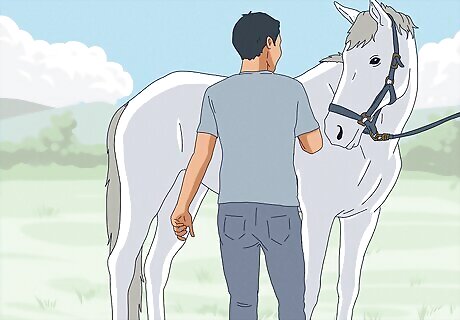
Approach the horse from the side and front. Always approach at an angle, never from directly behind or in front. Horses have blind spots in front of their noses, under their heads, and directly behind them. You want to avoid frightening them with sudden sounds, movements, or touch from those directions. Never lunge toward a horse or slap it on the rear.

Be slow, quiet, but positive as you approach the horse. Don’t express any anxiety or nervousness. Walk casually, without looking the horse in the eye. Stop every so often to pick some grass: the idea is to get the horse curious and interested in you, rather than frightened. Speak to your horse. Keeping a soft, gentle tone, use your voice to let your horse know that you’re approaching, especially if she can’t see you the whole time. Rub your horse’s shoulder when you are close enough. This will give reassurance. Let her smell your hand and get used to your scent.

Pay attention to the horse’s reactions. Slow down if she starts to move away. If your horse’s ears are pinned back or rapidly swiveling, he may be frightened or overwhelmed. Move even more slowly and offer gentle reassurance. On the other hand, if his ears are forward and open, he’s interested, and you can keep progressing.

Ease the halter shank over the horse’s neck. Hold it in place with one hand and use your other hand to halter the horse, moving as slowly as possible. Hold the halter open to get it over the horse’s nose without tickling her or blocking a nostril. Never tie a rope around the horse’s neck.
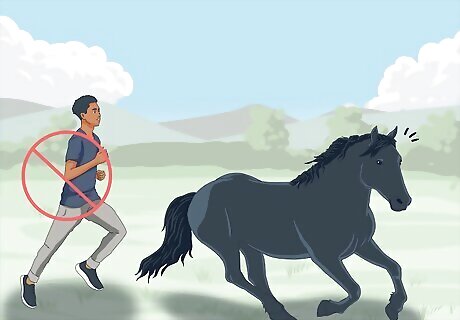
Do not chase the horse. You will never outrun a horse. In addition, whether you are in a large field or a small corral, you do not want your horse to panic or bolt. If the horse is snorting or rearing, wait. Stand, talking quietly or rattling a treat to engage the horse’s attention and help him calm down. If your horse is in a dangerous place, you can herd him by placing yourself so that, in moving away from you, he moves toward a safer place. You might be able to herd him into a corral of some sort, where he can more safely calm down and become approachable. Know your limits. If you can’t catch this horse safely, let a more experienced horse handler lead the way instead.
Getting Your Horse Used to Being Caught
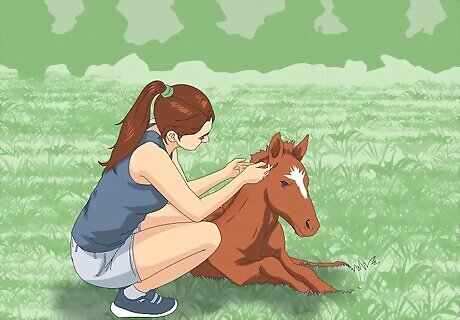
Start taming your horse from the time she’s a foal. Establish yourself as a member of her herd rather than as a predator. Touch your foal, speaking to her and getting her used to human contact and interaction, including being caught. Intervening in the foal’s early hours, and especially following protocols that call for restraining a newborn foal in order to desensitize her, have not been shown to be effective.
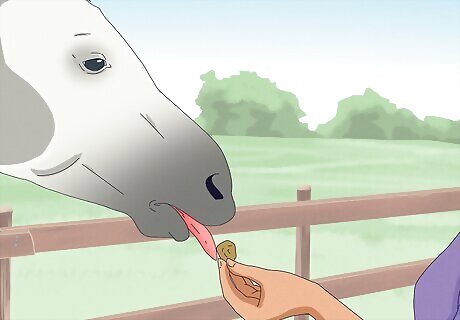
Reward your horse. Give your horse a food reward when he accepts being caught. If your horse is really reluctant, you might want to offer rewards for smaller achievements, too, such as standing still as you approach and allowing you to touch his neck. Although your horse might enjoy getting his withers scratched, food rewards are more effective in training and in generating your horse’s interest in humans. However, if you know your horse really appreciates a nice scratch or soothing grooming, try rewarding him with that as well. You can also try limiting his food and drink to a small corral for a week or two. Open the gate at random, unpredictable intervals, so that your horse learns to come running when he sees you.
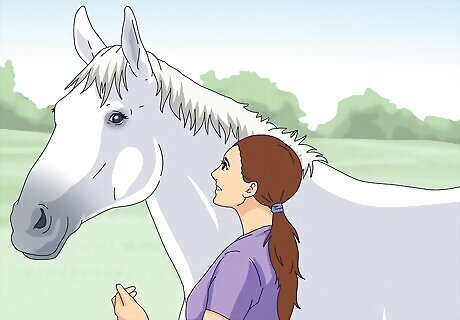
Spend time catching your horse, rewarding him, and then releasing him. You don’t want your horse to associate being caught only with work or the veterinarian. Catching your horse repeatedly only to give him a treat will help to build a more positive set of associations with the entire process
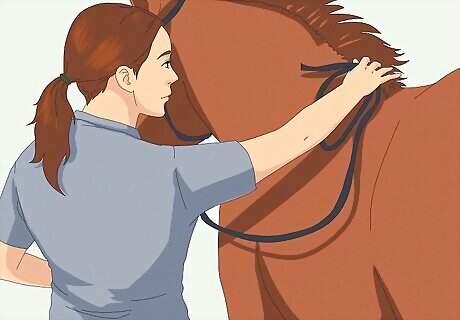
Make a light-hearted game out of approaching your horse. Once you’ve put a halter and lead rope on your horse, rub him with the end of the rope and make sure he’s feeling calm and happy. Then, stand at the end of the rope and start approaching him. Try different styles of approach – walking, skipping, jumping – and different speeds, seeing how many he’ll tolerate without flinching or moving. In between, rub and soothe him again. This method is called “habituation through progressive desensitization.” Basically, you’re getting your horse to be less sensitive to your approach. Repeat this game for seven sessions in a row in order to build your horse’s sense of trust and comfort. Increase the length of the lead rope. If it’s going well, try it with no lead rope.
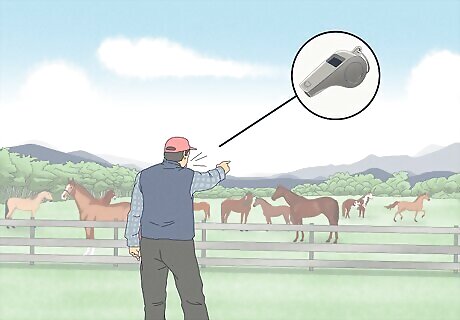
Establish a routine around catching all of your horses. Call them all from the pasture into a corral using a consistent signal, such as a whistle, and rewarding them for coming. Catch the most willing horse first, and give her a scratch or a treat. Then work your way through the horses until you get to the one you want.

















Comments
0 comment